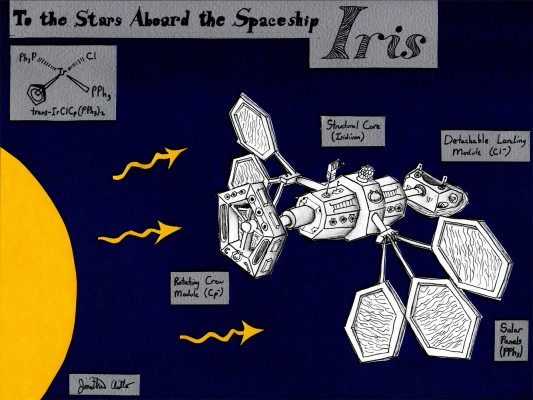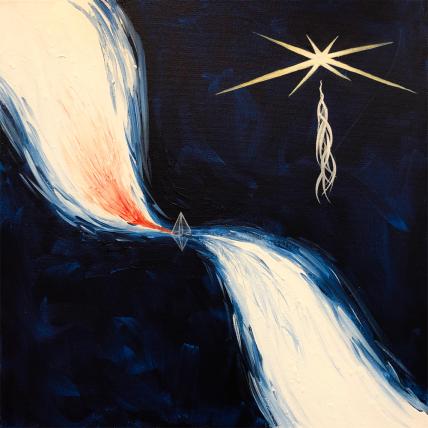Faculty in the Department of Chemistry reflect on teaching, learning, researching, and living amid a pandemic and beyond.
Colleen Craig, Charlie Barrows, Anne McCoy, Daniel Chiu, and Sarah Keller
Dianne Xiao
Anne McCoy
Brandi Cossairt
Colleen Craig, Charlie Barrows, Anne McCoy, Daniel Chiu, and Sarah Keller; faculty
We collaborated on a massive project to record and caption videos of every equilibrium and thermodynamic concept that we present in CHEM152/153. By doing so, we gave our students the flexibility to watch lectures whenever (and as many times) as they wanted. We felt that this project would particularly benefit students who had spotty internet connections, who had to log in from time zones far away, and who wanted to schedule their COVID vaccinations on a day without course requirements. We converted some of the traditional lecture periods into Help Sessions, greatly increasing the number of office hours in which we could directly answer students’ questions. We used other lecture periods to offer low-stakes quizzes (rather than only a couple of high-stakes exams). Some elements of this shift have been so successful that we plan to retain them as a resource for students in the future, even after we return to in-person instruction. Although recording the lectures was truly exhausting (we gave up our winter breaks to produce the videos), we have been gratified to see that many students specifically called out the videos in their teaching evaluations:
“I liked that this flipped class gave the best of all the chem teachers. It definitely shows how much effort and passion each teacher has on the topics of CHEM 152.”
“I liked that we got the perspective of different professors on the topics and that it wasn't the same for every video.”
In the end, our collaboration allowed us to offer a diverse panel of experts to instruct each student, regardless of which section they signed up for. On our side, an unforeseen delight of the project was the opportunity for us to watch the videos our colleagues produced, to learn their alternate ways of explaining concepts, their new examples, and their stories.
Back to top
Dianne Xiao, assistant professor
On my first day of remote teaching, my iPad wouldn’t connect to Zoom. It refused both a direct cable connection (it didn’t “trust” my computer) as well as WiFi (the appropriate plug-in wasn’t installed). After class, I realized I had also bungled my Zoom recording settings so that the recorded lecture was unusable. I thought to myself, I can’t wait for online learning to be over!
Despite how flustered I felt that day, as I reflect on the past year, these and many other technological mishaps have largely faded from memory. Instead, what stands out most is how students and instructors have come together to learn in amazingly creative ways.
My favorite example is from this past quarter when I taught Chem 165 (Honors General Chemistry). The final assignment was a creative project titled “Art in Science.” I wanted it to be fun, so I intentionally kept the guidelines broad and the grading stakes low. I simply told the students to create something original, inspired by concepts learned in class. I was completely blown away by the results!
One student, inspired by the science fiction novel The Martian, reimagined an iridium complex as a spaceship; another depicted how transition metals interact with light via an abstract painting. There were a series of political poems inspired by the combustion of gasoline, as well as a children’s book describing the chemical characterization of cookies. One student converted the infrared spectrum of glucose into a piano etude; another created a formula that translated metal complexes into chords, allowing students to physically hear their different properties. There were sculptures and pottery, clever videos, home laboratory experiments, and even online games.
The best part was that we were able to enjoy all these projects together. In the last week of class, we hosted a virtual poster session online. We created tiny avatars and roamed around the virtual room, like we would in real life, chatting and looking at projects.
It was such a joy to see how students combined the information taught in class with their own personal experiences and passions. I got a chance to see who the students were beyond just a blank Zoom screen. The projects were also thought-provoking. One student described research that showed how music can be used to aid chemistry learning. How art can be used to complement traditional learning techniques is an area I hope to learn more about.
Somehow, despite the inauspicious beginnings, remote teaching and our imperfect technological tools have enabled one of the highlights of my teaching career. While I’m excited for this strange period of remote teaching to come to an end, I am grateful for the rewarding experiences I have gained.
Jonathan Aalto created a spaceship whose structure and properties mirror the coordination complex Ir(Cl)(Cp)(PPh3)2. Ligands were converted into solar panels, a rotating crew module, and a detachable lander.
Lily C. Winter’s project was inspired by how transition metals interact with light. Her painting depicts an octahedral metal center absorbing orange light and transmitting blue.
Back to top
Anne McCoy, professor
The department was provided with the opportunity to run a faculty search to hire new colleagues. This is an activity that has long-term implications for the department. I chaired this year’s search committee. From the start, we were encouraged to consider what must we do differently and what can we do the same, while keeping our interview process consistent with COVID-19 regulations. In the past, once we selected our finalists, we would invite them to visit campus for a 2-day interview, which includes talks, one-on-one meetings with faculty and students and an opportunity to tour the department and campus. Going into the process we recognized that it would be impossible to do any of the interviewing in person. Rather, the interviews and presentations would need to be conducted using Zoom, with most of us calling in from our home offices. The COVID-19 restrictions required us to rethink every aspect of the process. In addition to the obvious changes in venue, conversations among the faculty, which would usually occur informally in the halls of Bagley needed to be scheduled as small and larger group discussions.
The process required considerable planning with the committee, the chair and staff, and in the end, the conversations that took place during the interviews were often more thoughtful and participation higher compared to recent years. The search process was successful, and we are excited to welcome Lauren Rajakovich to our department. While I remain hopeful that the next time that we engage in a faculty search we will be able to bring the finalists to campus and meet with them in person, many of the conversations about why we conduct interviews the way we do, and how we could do it differently to accommodate socially distanced interviewing will find their way into future faculty searches!
Back to top
Brandi Cossairt, professor
I remember the first day after the University closure sitting at home on Zoom and talking to my research group saying, "Three weeks; we will be back at it in three weeks. We can do this!" Little did I know that more than a year later, things are still not back to normal, and may never be. During this highly unusual year our research experience was upended—we had to learn new ways to communicate, new ways to train students, new ways to collect data. We had to rely on each other to keep the lab environment safe. And we did this while battling moments of deep uncertainty and intense isolation. I have been amazed at the resiliency of my research team. I admire their innovative approaches to keeping science going while social distancing and their commitment to supporting each other when it seemed like life as we knew it was falling apart. It was hard. It remains challenging. But there are some positives that have come from it. I now understand how I and my team can maximize efficiency through hybrid work formats that combine work from home with lab/bench work. I have learned the power and potential of meaningful virtual communication. And I will always remember the importance of cultivating a lab community based on trust, open communication, and wherein mental and physical health are a priority.
Back to top
IN THEIR OWN WORDS: UNDERGRADUATE STUDENTS
IN THEIR OWN WORDS: GRADUATE STUDENTS